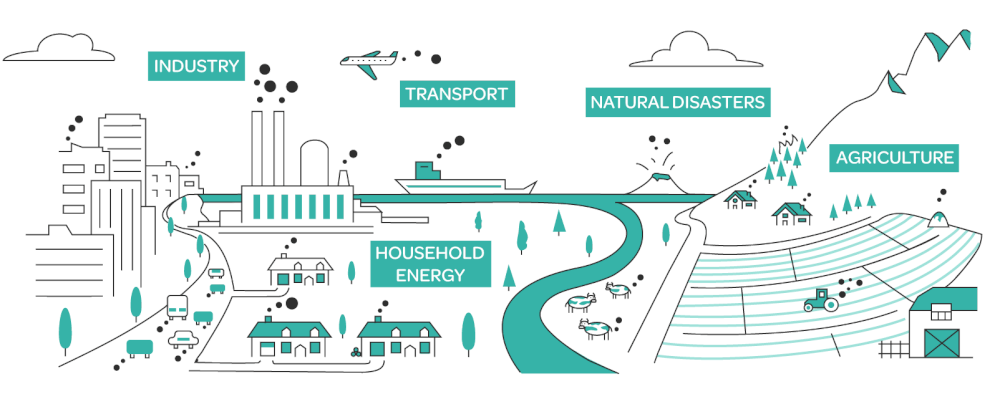Atmospheric Pollution Control AM216021 Current Open for UCT
Topic outline
-
General information
 This course provides fundamental knowledge in the nature of atmospheric pollution, relative types, correlated effects, control principles and applications.
This course provides fundamental knowledge in the nature of atmospheric pollution, relative types, correlated effects, control principles and applications.
The interactive video conferencing-based tools are available in Microsoft Teams and Zoom Video Communications (screen share interactive face-to-face learning).


-
Extra information associated with a particular point in a document or other piece of information
-
Contact, profile, and consultancy tools with the professor
-
General principles, pedagogy and management strategies used for classroom instruction
-
Types and grades of qualification suggested to follow the course
-
Resources used in teaching and learning to help achieve desired studying objectives
-
The amount of working time expected or assigned students
-
General endpoints of knowledge and understanding after the study
-
Function indicates that the study should completed with substantially quality and credit
-
Assessment by lecturer of all aspects of the learning experience
-
Recommended textbooks, reference books, workbooks and handbooks
-

An informal gathering where current students can learn all about
(designed openly for enrolled participants)
-
-
-
Lecture 08. Industrial particulate matters emission control Lesson

Key issues:
- Principles of:
- Gravity settling
- Centrifugal impaction
- Inertial impaction
- Direct interception
- Diffusion
- Electrostatic effects
- Key remarks in
- Types, design, internal/external layouts, materials
- Particle size, temperature limit, pressure drop
- Removal efficiency, gas velocity
- Cleaning methods and disposal
- Common internal separator:
- Gravitational settling chamber, horizontal flow, multi-tray
- Cyclone, multi-cyclone
- Fabric filter, baghouse
- Common wet collector:
- Spray chamber/tower
- Cyclonic scrubber
- Venturi scrubber, coupled with others
- Packed bed scrubber, packing media, dual-stage
- Fundamental practice in electrostatic precipitator, ESP
- Wet and dry
- Plate and tube electrodes
- Engineering consideration
- Sticky, wet or explosive
- Resizing
- Upscaling
- Dual-action
- Industrial application
- Dimension, simplicity, space
- Operation and maintenance cost
- Conjunction with other devices
- Bottom ash and sludge treatment
-
Module 08. Industrial particulate matters emission control File PDF
(Supporting handouts for Lecture 08, printable pdf format, A4 size, landscape layout)
6.1 MB -
Shared media: basics of collection devices Page

Illustrative video clips:
- High-efficiency cyclones
- Inertia & centrifugal forces forming a dual vortex in multi-cyclone system
- Basics of packed bed scrubber
- Basics of baghouse
- Basics of electrostatic precipitator
- Technical details, component design, and industrial application of ESP
-
Individual presentation 08 Workshop

Title 08: Industrial particulate matters emission control
-
Practical exercise series / Topics 18 and 19 Assignment

Topic 18. Flow rate, penetration and efficiency, 3pts
(1pt for each correct calculation step)
Topic 19. Overall removal efficiency, 2pts
(1pt for each correct calculation step)
-

